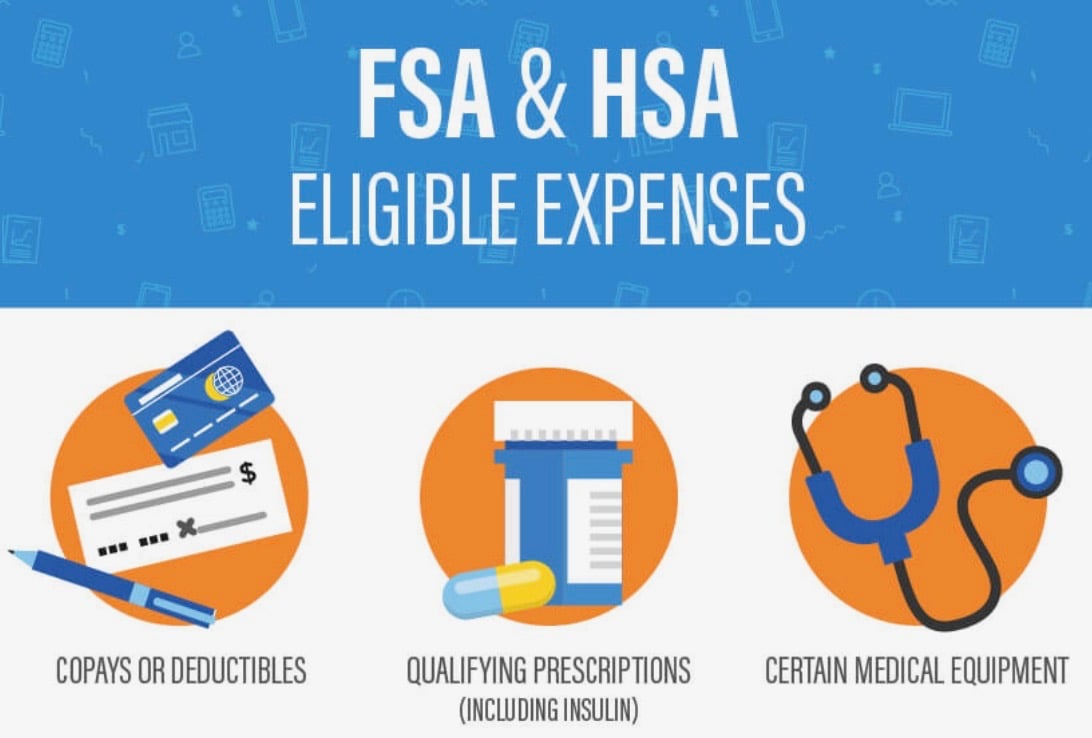
Flexible Spending Accounts (FSA) and Health Savings Accounts (HSA) plans are like personal savings accounts. However, the funds in the accounts can only be used for qualifying medical expenses, which cover everything from insurance deductibles and copays down to supplies such as bandages, crutches, and contact lenses.
What makes an FSA or HSA better than a traditional savings account? The answer is taxes. Your earnings move into these accounts without being taxed as income, and they also get protected from unemployment, Social Security, and Medicare taxes. This helps you in two ways. It preserves more money for the account and, because it doesn’t count as taxable income, it potentially keeps your income in a lower tax bracket.
FSA
What you need to know about this account is that you can quickly get, but also quickly lose, your access to its funds.
With an FSA, you can invest roughly $2,700 of untaxed income into a bucket that covers life expenses.
There are two types of FSA, a Dependent Care Flexible Spending Account, which can be spent on work-related childcare, and a Health Flexible Spending Account, which goes toward qualified medical expenses. Both of these accounts are owned by your employer.
The perk to the FSA is how soon your funds become available. You have to enroll for the program and set your contribution amount during the fall enrollment period, but then you have access to the entire budget as of January 1.
The drawback to an FSA is its limited protections for job transitions and yearly rollover. If you leave or lose your job midyear and you haven’t used your FSA balance in full, you likely forfeit access to it. Check with your business because guidelines vary from one company to the next.
HSA
HSA cover all qualified medical expenses but the protections and limitations of this account are very different.
The first thing to know is that not everyone is eligible for an HSA. It’s available only to people who use a high-deductible health insurance plan, one with an annual deductible of $1,350 or more.
The account is entirely yours, not your employer’s. This means there are no concerns about job transitions or yearly rollover limiting your access to the balance. It’s yours to use when you need it. You’re even allowed to withdraw funds to pay non-medical expenses, but you’re going to owe income tax on your withdrawal.
Moreover, HSA has a higher contribution limit. People who file taxes independently can invest $3,550, while married couples who file jointly can double that. HSA totals can be altered at any time.
The drawback of HSA is that you can’t outspend your investment. Instead of accessing the full contribution amount as of January 1, you can grab only what you’ve accumulated in your account.
How FSA and HSA Work with Concierge Medicine Costs
These spending accounts cover such a wide-ranging list of medical expenses.
HSA and FSA work just as well with concierge care as they do with traditional physician practices. So you can have the dedicated care of a concierge office while enjoying the tax benefits of your spending account.
Any copay, prescription, or out-of-pocket concierge expense that you can bill to your insurance company should be FSA- and HSA-eligible. Depending on your individual plan, these costs may be able to be applied to your FSA or HSA. Always check with your plan to ensure you have a clear understanding of what kind of expenses can be applied to your FSA or HSA.
The general rule to remember is that, if insurance covers an expense, so does a spending account. That’s true with traditional practices and with concierge care, too.

